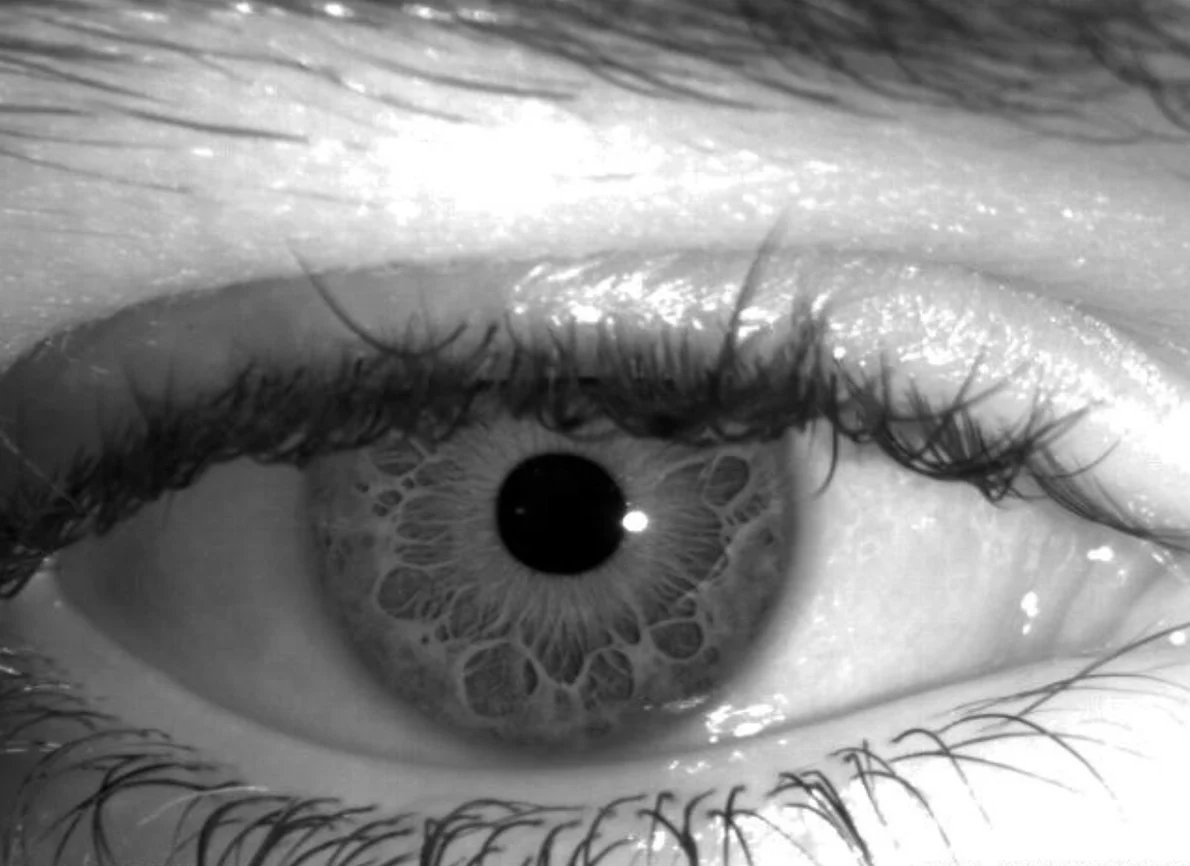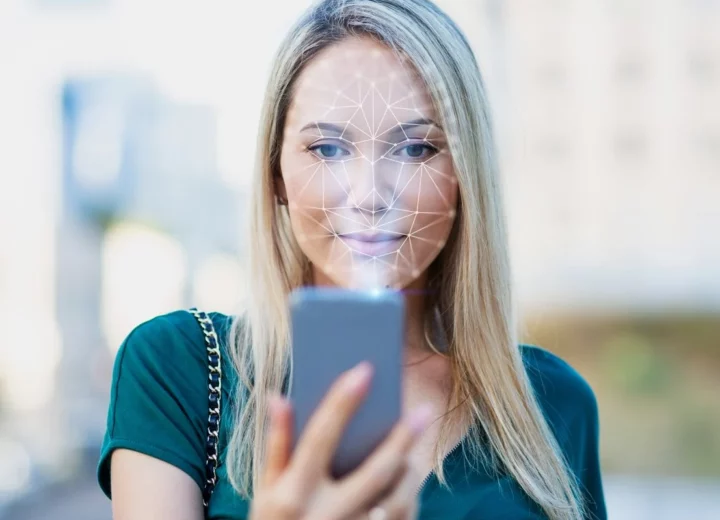In this blog post, we explain iris recognition system photography. Our starting point is the human eye.
The iris is the colored part of your eye. You might have brown eyes like 90% of the world’s population. Or you might have blue or green eyes or some combination. Melanin pigment in varying amounts on the surface and within your iris determines its color. But it is the detailed structure of your iris tissue that makes each of your irises unique to you. To photograph your unique iris structure, an iris camera looks right through the iris pigment – if it didn’t, all the irises of brown-eyed people would appear just about the same. Fortunately, the melanin pigment of your iris is transparent to near infrared light which is just beyond the range of human vision at the red end of the rainbow of visible colors. When infrared light shines on your iris, it lights up the random creases, wrinkles, miniature holes and bumps of your individual iris so that a camera that is sensitive to the infrared light can record its structure. So, using infrared light, an infrared-sensitive camera photographs your iris.
It is lucky that we need to use infrared light. Consider the last time someone took a flash photograph in your face. Very annoying. The persistent after-image dots that float in your eyes following the flash are unpleasant as well. If we had to use a visible flash, iris photography would be a lot less popular. But since our flash is beyond the range of human vision, there is no discomfort and no after-images – and the level of light is carefully adjusted to be 100% safe.
The duration of an infrared flash from an iris camera can be as short as about one-thousandth of a second. In that time, your eye cannot not move much so there is little worry of motion blur. Moreover, an iris camera can safely flash many times per second. Even if you blink during one or two of the photographs, the camera will capture others with your eyes open.
Iris photographs do not look like typical photos of human eyes. An example is shown below. You can see the iris structure in this photo. Once the photographs are taken and digitized, they are sent to a computer within the iris recognition system to be analyzed. In Part 2, we will explain how an iris recognition algorithm can analyze the unique structure of your eye, create a mathematical rendering of it called an iris template and store the template for later comparison to other iris templates.





